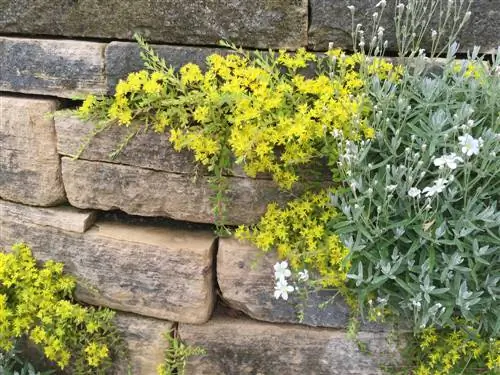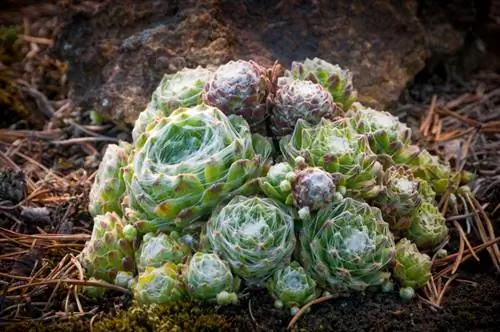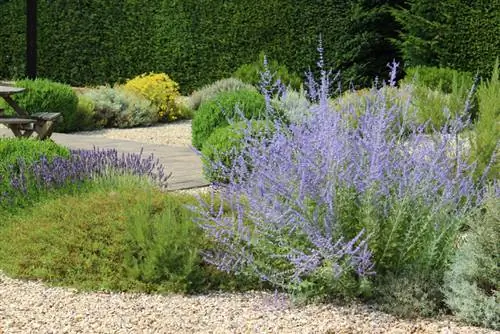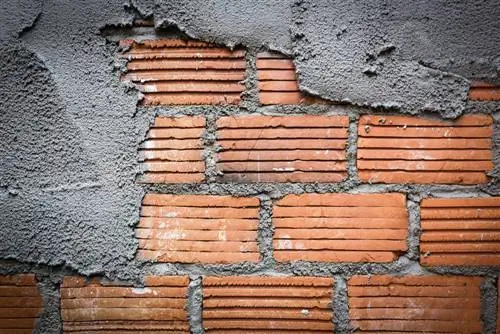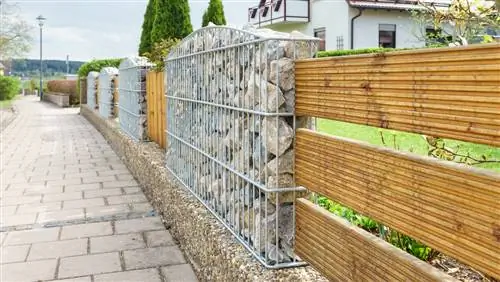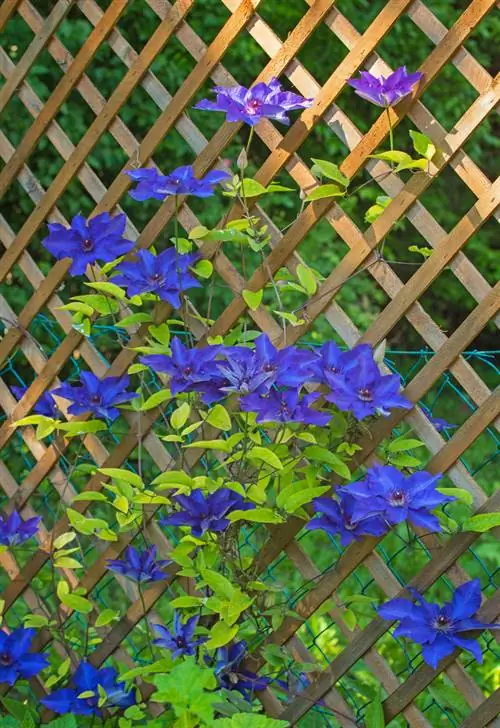- Author admin [email protected].
- Public 2023-12-16 16:46.
- Last modified 2025-01-23 11:22.
Regardless of whether it is made of concrete, brick or natural stone, a garden wall made of one of these materials usually looks quite dreary and blends in with the green surroundings in a visually unappealing manner. The building can be easily beautified by planting it. If it gets old, greenery offers another advantage because the roots of the plants stabilize the masonry. In the following guide you will find great tips for greening walls.
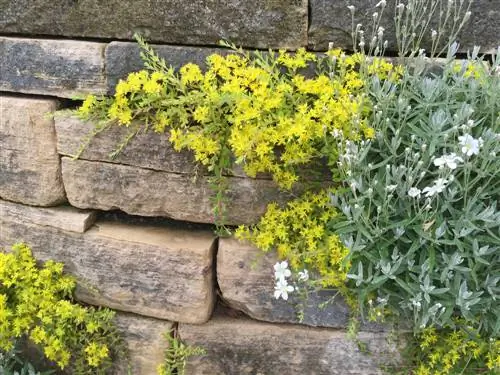
Which plants are suitable for planting on a garden wall?
Resistant plants such as blue cushions, milkweed, fine-leaved marshmallow, purple sedum, carpet myrtle aster, Carthusian carnation, spurflowers and candytuft are ideal for adding attractive greenery to a garden wall. These can be planted in cracks in walls between April and September.
Wall planting with flowers
If you place plants in the cracks in the wall, they must be extremely resilient. Not only is the amount of substrate very limited here, the plants also have to cope with wind, heat and cold. However, there are survivalists who prefer exactly these conditions:
| Plant | Description |
|---|---|
| Blue pillow | The classic among plants for wall growth. Is well suited to sunny to partially shaded locations and also tolerates drought well. Blooms profusely purple-blue. |
| Wood milkweed | Evergreen plant whose fleshy leaves are attractively colored blue-green. Prefers full sun locations. In May and June the plant is decorated with small, yellow flowers. |
| Fine-leaved broken herb | This delicate plant only grows to about five centimeters high. It spreads quickly and loves full sun locations and lime-poor soils. Blooms rather inconspicuously white. |
| Purple Stonecrop | This type of Sedum is well suited for wall greening as it grows in low clumps. Between June and August it produces dark pink flower umbrellas that attract bees and other insects. |
| Carpet Myrtle Aster | This plant is extremely drought-resistant and is therefore also suitable for south-facing walls. It grows to a height of about thirty centimeters and blooms white from September to October. |
| Carthusian carnation | The name itself suggests how undemanding this plant is. The purple-red inflorescences, up to fifty centimeters high, sprout from the compact clumps between June and September. The Carthusian carnation collects itself and colonizes even the smallest cracks in walls. |
| Spurflowers | This plant can be found in many cracks in walls and rock cracks in its Mediterranean homeland. It blooms very pretty red or white. |
| Ribbon flower | This evergreen plant produces white, pink or purple flowers from June to August. The candytuft forms dense cushions and over time grows over the entire wall. |
How to plant correctly?
You can green up dreary garden walls from April to September. Proceed as follows:
- Fill the joints with a mixture of 50 percent potting soil (€10.00 on Amazon) and 50 percent coarse sand or gravel.
- Since the commercially available plants are usually too large for the narrow cracks in the wall, carefully pot them up and divide them.
- Place plants as deeply as possible in the joints and cover the roots with substrate.
- Press down and water with a fine jet of water so that the substrate is flushed stably into the gaps.
Tip
If you don't want to plant the wall directly, you can cover it with climbing plants such as clematis, wild vine, firethorn or ivy.

